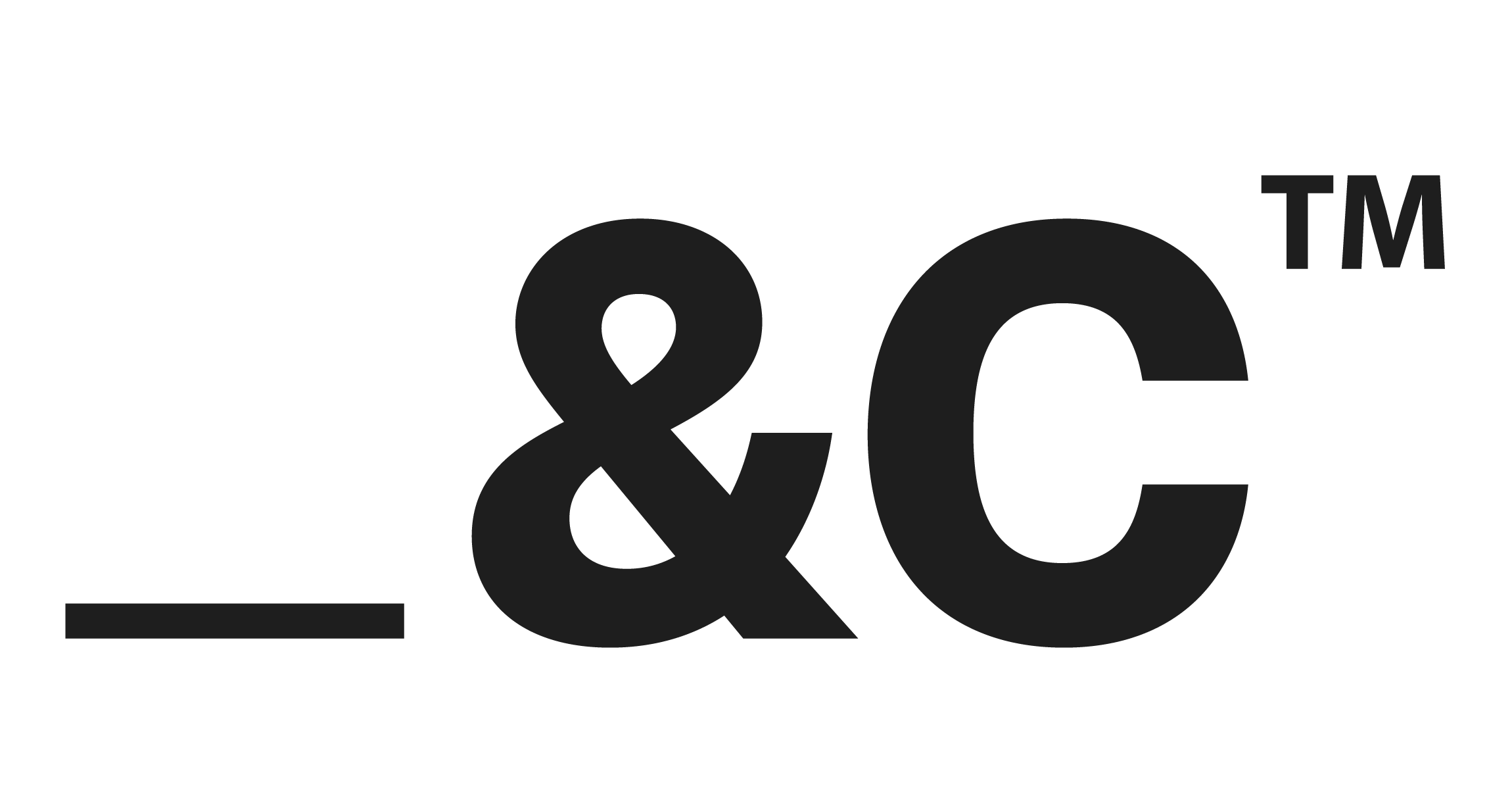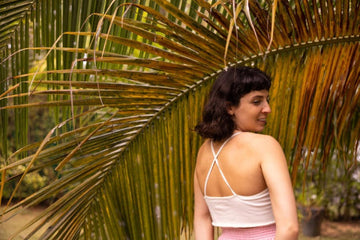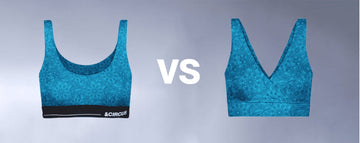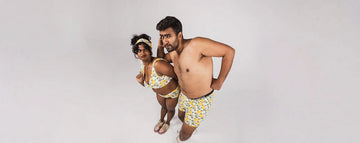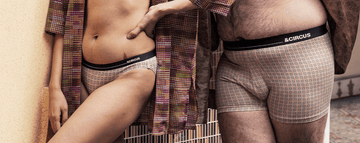Quick Listen:
The tropical city pulses with life, but its heat and humidity can feel like a relentless adversary. Step outside in Mumbai, Bangkok, or Singapore, and within moments, your clothes cling to your skin, weighed down by sweat. For the millions navigating these urban jungles, this is no mere inconvenience it's a daily challenge that demands a smarter approach to what you wear closest to your body. Enter the world of eco-friendly, moisture-wicking underwear, where brands like AndCircus are redefining comfort and sustainability. With innovative fabrics that keep you dry and a commitment to the planet, this quiet revolution in innerwear is changing how we thrive in the tropics.
A Surge in Performance Fabrics
In tropical climates, where temperatures regularly exceed 85F and humidity often surpasses 80%, traditional cotton underwear falters. Cotton traps moisture against the skin, fostering discomfort and even health risks like irritation or infections. Moisture-wicking fabrics, however, are engineered to pull sweat away, allowing it to evaporate swiftly. A July 2025 analysis from Global Market Insights highlights the booming men's underwear market, driven by demand for high-performance materials, with moisture-wicking options leading the charge. Authored by industry experts Avinash Singh and Sunita Singh, the report underscores how these fabrics often blends of polyester, nylon, or natural fibers like bamboo are becoming essential for urbanites unwilling to let climate compromise their comfort.
What makes brands like AndCircus stand out is their fusion of performance with environmental responsibility. By weaving organic cotton, bamboo, and recycled polyester into their designs, they cater to a growing cohort of consumers who demand both functionality and sustainability. In tropical regions, where practicality meets a rising eco-consciousness, this dual focus is reshaping the innerwear landscape, offering a solution that feels as good as it performs.
Comfort with a Conscience
AndCircus exemplifies this shift. Their moisture-wicking underwear, crafted with bamboo fibers and recycled materials, is tailored for the rigors of tropical climates. Soft, breathable, and highly effective at managing moisture, their products have won over customers in cities like Bangkok, where long commutes and outdoor activities amplify the need for reliable innerwear. The health benefits are significant damp fabrics can lead to chafing, rashes, or bacterial growth, but moisture-wicking technology keeps skin dry and irritation at bay. For eco-conscious shoppers, AndCircus's use of sustainable materials adds another layer of appeal, ensuring minimal environmental impact without sacrificing performance.
This trend extends beyond one brand. A 2024 report from Grand View Research notes the thriving innerwear market, with consumers increasingly favoring brands that blend comfort with eco-friendly practices. As Brian Moore, VP of NICCA USA, Inc., attests, the quality of such market insights is exceptional, guiding brands to meet evolving demands. In vibrant hubs like Mumbai, where style is as crucial as function, sustainable fashion brands are integrating moisture-wicking technology into sleek designs. From tailored boxer briefs to lightweight tanks, these garments cater to professionals, athletes, and anyone seeking relief from the tropical heat.
Globally, the adoption of moisture-wicking innerwear is surging. In cities like Singapore and So Paulo, where urban lifestyles collide with oppressive climates, consumers are embracing these innovations. The result is a growing market for innerwear that doesn't just perform but aligns with modern values of sustainability and health.
Hurdles on the Path to Adoption
Despite their promise, moisture-wicking fabrics face challenges. Balancing sustainability, durability, and performance is no small feat. Eco-friendly materials like bamboo and organic cotton, while gentle on the planet, can degrade faster than synthetics under the strain of frequent washing and tropical heat. A comprehensive 20202034 forecast by Transparency Market Research projects significant growth in the moisture-wicking fabrics market, measured in billions of dollars and millions of square meters across fiber types and distribution channels. Yet, it emphasizes the need for innovation to ensure these materials withstand diverse conditions.
Consumer education remains a barrier. Many still opt for inexpensive cotton underwear, unaware of the superior comfort and health benefits of moisture-wicking alternatives. Brands must invest in clear, compelling messaging to highlight why these products justify their cost. Speaking of cost, eco-friendly materials often carry a premium, which can deter budget-conscious shoppers in competitive markets. Additionally, with numerous brands entering the moisture-wicking space, differentiation is critical. AndCircus and its peers must carve out distinct identities to avoid being lost in a sea of similar offerings.
Seizing Opportunities in the Tropics
These challenges, however, are ripe with potential. For AndCircus, emphasizing their sustainable ethos through biodegradable materials and ethical production can resonate with the rising tide of eco-conscious consumers. The health benefits of moisture-wicking underwear are a powerful selling point: less sweat translates to reduced chafing, fewer skin irritations, and a lower risk of infections. In tropical cities, where active lifestyles and long days are standard, these advantages are indispensable.
The market opportunity is vast. Tropical urban centers, home to millions from Singapore's tech professionals to So Paulo's street vendors, represent a massive audience for high-performance innerwear. Brands can expand their footprint through strategic partnerships with local retailers or collaborations with sustainable fashion influencers who connect with younger, environmentally aware audiences. Picture a limited-edition collection with a Bangkok-based designer or a pop-up shop in Mumbai's bustling markets these moves could amplify reach and relevance.
Innovation also opens doors. Advances in bio-based synthetics and recycling processes could lower costs and improve durability, making eco-friendly moisture-wicking underwear more accessible. By aligning with consumer values and leveraging tropical market trends, brands like AndCircus can solidify their position as leaders in this space.
A Vision for a Cooler, Greener Tomorrow
A sustainable fashion expert in Singapore recently told me, Moisture-wicking fabrics are more than a comfort solution they empower people to live better in challenging climates. This perspective underscores the broader impact of brands like AndCircus, which are paving the way for a future where performance and sustainability coexist seamlessly. The industry is poised for growth, with innovations in fabric technology promising even more efficient and eco-friendly solutions. From bio-based materials to enhanced recycling methods, the next wave of innerwear could redefine what's possible.
For those enduring the relentless humidity of a tropical city, the value of moisture-wicking underwear is clear. It's not just about staying dry it's about reclaiming ease and confidence in environments that test resilience. The next time you step into the sticky heat, consider what lies beneath your outfit. A brand like AndCircus could offer not just relief but a step toward a more sustainable future one where comfort and conscience go hand in hand.
Frequently Asked Questions
Why is moisture-wicking underwear essential in tropical cities?
Tropical climates like Mumbai, Bangkok, and Singapore are known for high heat and humidity, making sweat a constant issue. Moisture-wicking underwear keeps the skin dry by pulling sweat away and allowing it to evaporate quicklypreventing irritation, chafing, and discomfort during daily commutes or outdoor activities.
What fabrics are used in eco-friendly moisture-wicking innerwear?
Brands like AndCircus use a blend of bamboo, organic cotton, and recycled polyester to deliver both performance and sustainability. These fabrics not only keep you dry but also minimize environmental impactmeeting the demand for ethical, breathable innerwear thats durable in tropical conditions.
What are the challenges in making sustainable moisture-wicking underwear?
While bamboo and organic fibers are eco-friendly, they may degrade faster in hot, humid climates or after frequent washing. Additionally, higher production costs and the need for consumer education make it essential for brands to innovate, communicate value, and differentiate themselves in a competitive market.
Disclaimer: The above helpful resources content contains personal opinions and experiences. The information provided is for general knowledge and does not constitute professional advice.
You may also be interested in: The Essential Guide to Men's Underwear for Various Activities
Uncomfortable underwear shouldn't steal your confidence. At Andcircus, we craft ultra-soft, sustainable Lenzing Modal Micro innerwear for every body, XS to 5XL. From briefs to bras, our custom packs fit you perfectly. Shop risk-free with our 100% satisfaction guarantee and embrace comfort that includes everyone. #LoveEveryBody. Shop Now!


